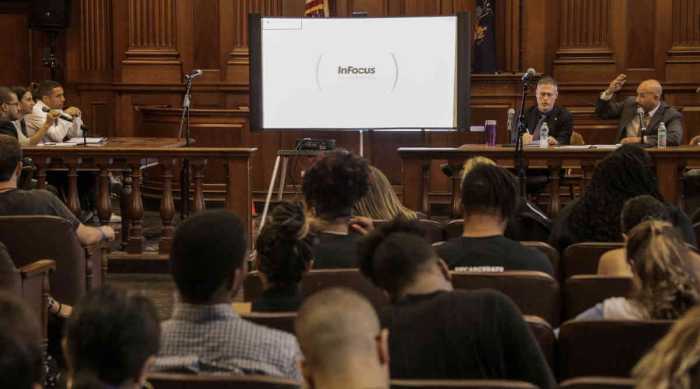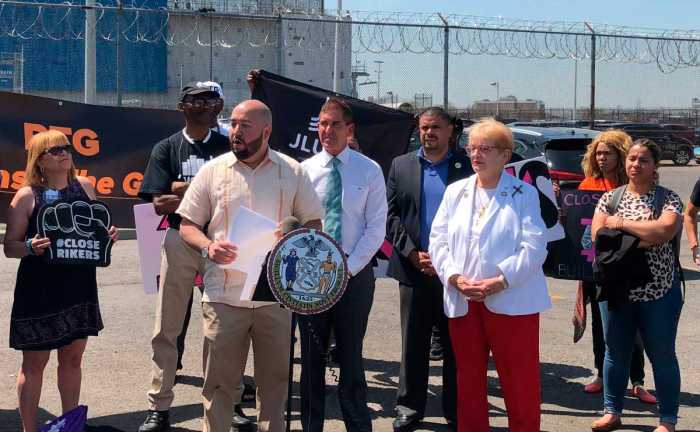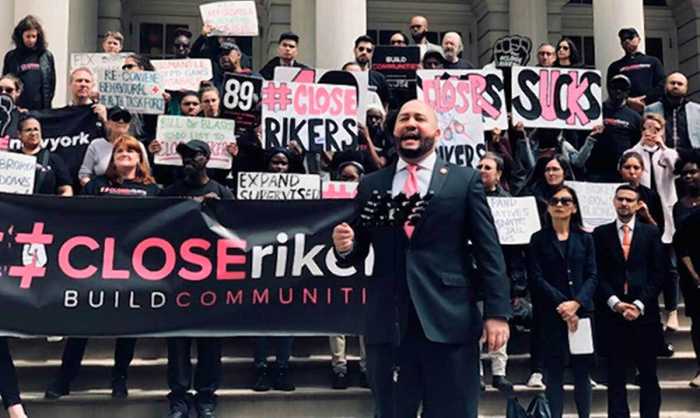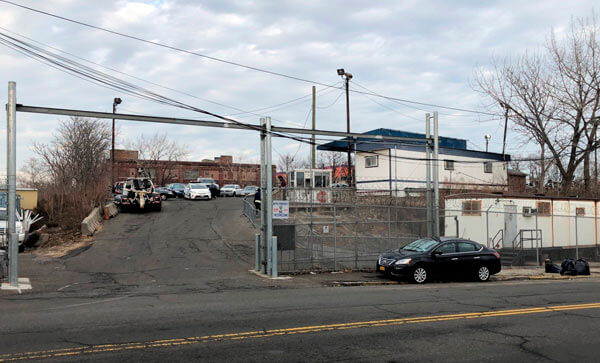This article was originally published on by THE CITY
A detainee assaulted a city correction officer who fell asleep after working a double shift. Eleven men at Rikers got in a gang fight after two housing unit doors were left unsecured. Correction officers pelted detainees with racial slurs and pepper spray.
Those are a few examples from a “system that is rife with violence and disorder,” according to the latest report by a federal monitor overseeing the Department of Correction.
“Data on uses of force, fights, stabbings, and slashings among people in custody and assaults on staff reveal that 2021 has been the most dangerous year” since the monitor began overseeing local lockups in 2015, the scathing 152-page report found.
The report comes as some contend the court-mandated oversight, led by monitor Steve Martin, who is based in Austin, Texas, has done little or nothing to improve conditions at Rikers Island, which has descended into new levels of chaos in recent months.
Elizabeth Glazer, director of the Mayor’s Office of Criminal Justice from 2014 until 2020, recently told THE CITY that a federal receiver, with emergency powers to make unilateral decisions, should take over the department.
After local elected officials toured Rikers Island in September amid a spike in deaths behind bars, some called on Gov. Kathy Hochul and even President Joe Biden to intervene.
Looking for Insights
In his 12th report since 2015, Martin stressed it was important to look beyond the grim statistics.
“Just because something can be quantified does not mean it is useful for understanding or assessing progress,” he said. “The trick is to identify those metrics that actually provide insight into the department’s processes and outcomes and that are useful to the task of problem solving.”
For instance, there’s no figure that could determine whether the department’s 2015 use of force directive, banning blows to the head, is working to curb officer assaults against detainees, according to Martin’s latest dispatch.

The report primarily covers the first six months of 2021 when jail supervisors struggled to get officers to show up for work. Some 1,600 officers called out sick and another 100 not showing up any given day last summer.
Among the causes the report cites for the lack of personnel: the COVID-19 pandemic, coupled with an unlimited sick time benefit for officers. The report also cited “lackadaisical” oversight to verify whether someone is legitimately unable to work, and “lack of accountability” for staff who abuse the time-off policy.
Martin’s monitoring team has hired an “independent expert in correctional staffing” to analyze how and where officers are deployed.
The Correction Officers Benevolent Association has contended the city should hire an additional 2,000 officers, bringing the systemwide total to approximately 10,000. Some 5,434 people were in jail as of Monday.
But Martin and former jail commissioners point out that hundreds of officers are assigned to administrative tasks like data entry, secretarial support, time keeping, social services, and analytics.
“The department has an extraordinary number of staff on its payroll, many of whom are deemed unavailable to work or are assigned to non-custodial duties,” the report said.
Swing First
As for violence, Martin — also known as the Nunez monitor, named for the lead plaintiff in the original class-action suit that spurred the oversight agreement — said city correction officers too often use their batons as a crutch.
He acknowledged that so-called uses of force by officers “will inherently occur in all jails” to protect both staff and incarcerated individuals “from serious harm.”
“However, in this department, the use of force is almost a foregone conclusion to address any issue and therefore occurs too frequently, and without the necessary attempts to resolve the situation without resorting to physical force,” the report stated.

The latest use of force rate was over three times higher than in 2016, according to the report. The rate went from 3.96 per 100 detainees six years ago to 12.56 over the first six months of 2021, according to Martin.
“The department is in crisis,” the federal monitor wrote. “A crucial foundation for effective leadership is adequate supervision and accountability. At the moment, both are severely lacking.”
The Legal Aid Society said the report “supports” what people behind bars tell its staff everyday: “That correction officers resort to abuse and brutality as a matter of course, rendering even short stays in custody both treacherous and traumatic,” said Mary Lynne Werlwas, director of the groups’ Prisoners’ Rights Project.
Staff Under Attack
While mostly focused on the first half of the year, the monitor’s report also noted that there were 2,113 detainee assaults on staff between January and September 2021.
“This translates to nearly eight assaults on staff per day during the 273-day period,” the report said, adding the risk of attack “is both frightening and stressful for staff.”
Still, some of the assaults were “generated by gratuitous and/or heavy-handed staff conduct that needlessly escalates encounters,” according to the Martin dispatch.
The incendiary behavior included “inappropriate use of racial slurs or provocative/profane language, questionable applications of [pepper] spray, and overly aggressive behavior that is not proportionate to the actual threat posed by the individual.”
Some of the assaults against officers also occurred as officers tried to restrain inmates, the report noted.
In response to the report, the city Correction Department touted more recent data showing improvement.
Over the last five months, July through November, use of force rates by correctional staff declined by 11%, rates of fights among incarcerated people declined by 19%, and the assault rate against staff dropped by 12%, according to Shayla Mulzac, a Correction Department spokesperson.
“We’re not declaring victory by any measure,” said DOC Commissioner Vincent Schiraldi in a statement. “But our hope is that these favorable numbers are early indicators of a positive trend that we can build upon to create a better future for staff and incarcerated people alike.”
THE CITY is an independent, nonprofit news outlet dedicated to hard-hitting reporting that serves the people of New York.

























